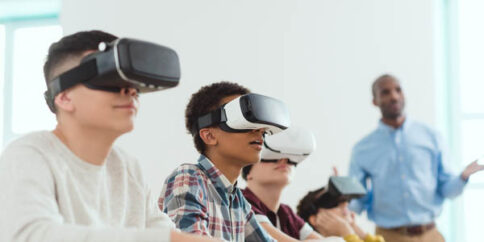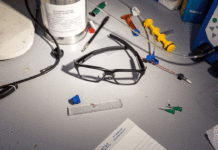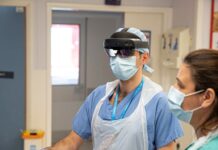
When virtual and augmented reality technology broke through the barrier, it was said that it could benefit education in particular. Schools could allow learners to conduct science experiments in class along with platforms like Mira. Which could help with training in the workplace as well as provide remote guidance to professionals working in the field? According to a report from PwC, the AR and VR market could deliver a $1.5 trillion boost in the UK alone. Technology partner at PwC, David Lee, said that organizations should thus consider the position of Virtual and Augmented eLearning technology in their businesses.
Virtual reality creates a simulated world with computer technology where it simulates several real-world experiences. Big companies like Sony & HTC are already out to grab a huge chunk of this market. Augmented reality, on the other hand, does not create a virtual world but it creates virtual elements that users can interact with in real life. Apps like Pokémon Go & Snapchat have already received praise for its innovative use of AR technology. Despite all the developments taking place in the AR/VR market, education still lacks AR/VR training.
The reason for this is mainly because AR/VR education usually requires special hardware. Oculus Rift, for example, was specifically designed for gaming. It can be used in educational training as well. The price of the hardware, however, is . It is also very costly to implement this equipment in schools. Experts are still promoting the idea. According to them, learning is more effective when experienced. Educators may also be wary of experimenting with AR/VR technology because they do not fully understand it. Experts note that there is also a lack of skill along with a lack of willingness to learn about technology.
Another point that experts make is that consumers need time to adapt to get used to a product. There have been many products on the market that failed before finding success. Some of the successes only took place because consumers had to take time to adjust to the technological trends. Experts believe that when consumers see the technology as part of their daily lives, like an electrician wearing a pair of smart glasses, they will be more open to accepting it. Even though the equipment is expensive and the software is not always readily available, all of this is busy changing.
So where exactly does that leave the implementation of Virtual and Augmented eLearning in the future? Martin Duffy of PwC believes that tools like Mira offer great potential for workplace training. It only needs an app and a headset that clips onto a headset. The headset projects an image onto the screen that can be navigated with eye movements. This allows for remote support for trainees to pause & rewind instructions at their leisure. Big firms are also getting on board the AR/VR train to expand their products, to ensure that they keep up with the trends.























